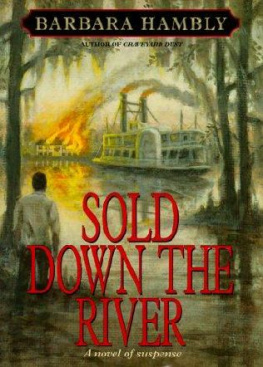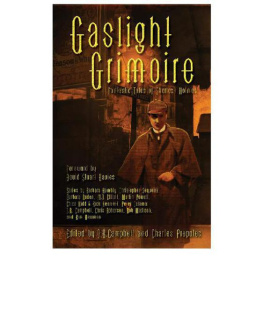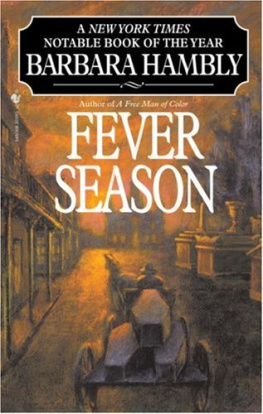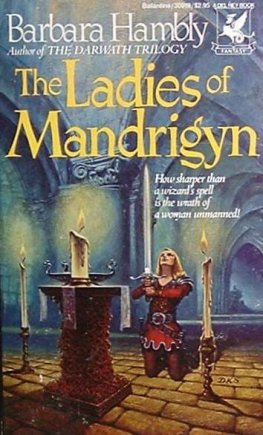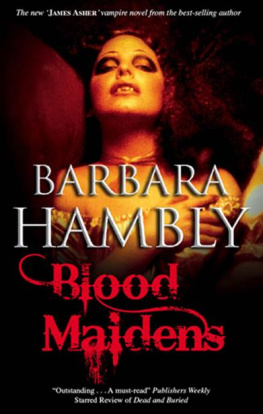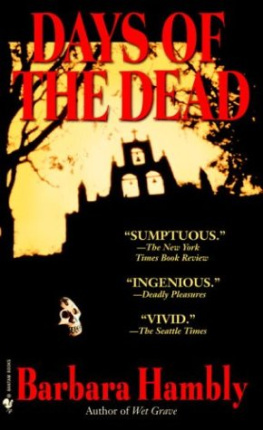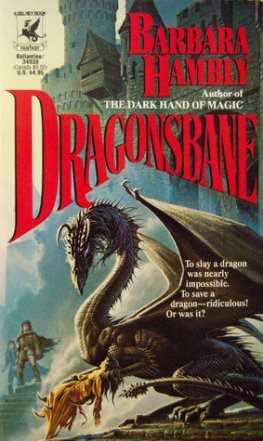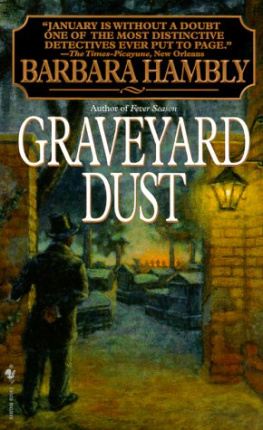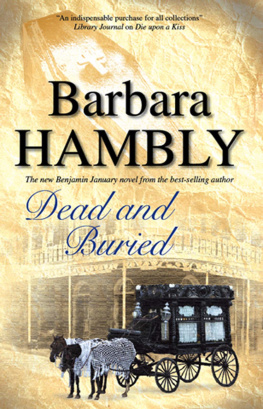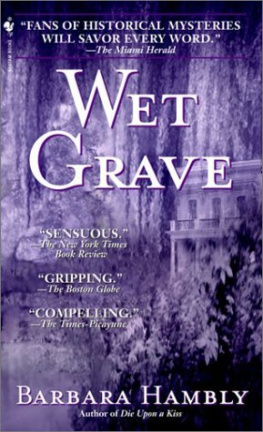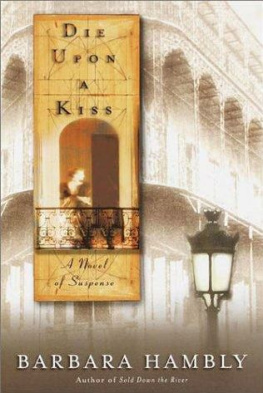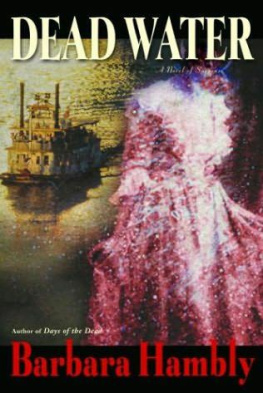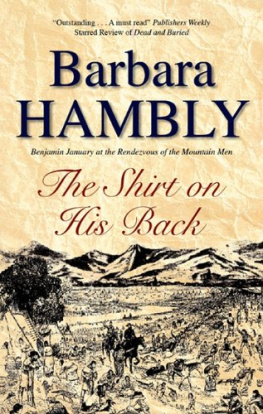Barbara Hambly - Sold Down the River (Benjamin January, Book 4)
Here you can read online Barbara Hambly - Sold Down the River (Benjamin January, Book 4) full text of the book (entire story) in english for free. Download pdf and epub, get meaning, cover and reviews about this ebook. year: 2001, publisher: Bantam Books, genre: Detective and thriller. Description of the work, (preface) as well as reviews are available. Best literature library LitArk.com created for fans of good reading and offers a wide selection of genres:
Romance novel
Science fiction
Adventure
Detective
Science
History
Home and family
Prose
Art
Politics
Computer
Non-fiction
Religion
Business
Children
Humor
Choose a favorite category and find really read worthwhile books. Enjoy immersion in the world of imagination, feel the emotions of the characters or learn something new for yourself, make an fascinating discovery.
- Book:Sold Down the River (Benjamin January, Book 4)
- Author:
- Publisher:Bantam Books
- Genre:
- Year:2001
- Rating:4 / 5
- Favourites:Add to favourites
- Your mark:
- 80
- 1
- 2
- 3
- 4
- 5
Sold Down the River (Benjamin January, Book 4): summary, description and annotation
We offer to read an annotation, description, summary or preface (depends on what the author of the book "Sold Down the River (Benjamin January, Book 4)" wrote himself). If you haven't found the necessary information about the book — write in the comments, we will try to find it.
Sold Down the River (Benjamin January, Book 4) — read online for free the complete book (whole text) full work
Below is the text of the book, divided by pages. System saving the place of the last page read, allows you to conveniently read the book "Sold Down the River (Benjamin January, Book 4)" online for free, without having to search again every time where you left off. Put a bookmark, and you can go to the page where you finished reading at any time.
Font size:
Interval:
Bookmark:
Special thanks are owed to Paul Nevski, Bill Coble, Norman and Sand Marmillion, and the rest of the staff of Le Monde Creole in New Orleans and Laura Plantation in St. John Parish, for unbelievable help, inspiration, and friendship in putting together this book. Thanks also to Pamela Arcineaux and the staff of the Historic New Orleans Collection for their patience, friendship, and help; to Laurie Perry for her comments and help on early black music; and to Kate Miciak of Bantam Books.
Thank you also to Jill and Charles, to Neil and deb, to Michael, and, of course, to George.
Also by Barbara Hambly
A Free Man of Color
Fever Season
Graveyard Dust
Die Upon a Kiss
Wet Grave
Days of the Dead
Dead Water
and
The Emancipators Wife:
A novel of Mary Todd Lincoln
BARBARA HAMBLY attended the University of California and spent a year at the University of Bordeaux obtaining a masters degree in medieval history. She has worked as both a teacher and a technical editor, but her first love has always been history. Barbara Hambly is the author of A Free Man of Color, Fever Season, Graveyard Dust, Wet Grave, Sold Down the River, Die Upon a Kiss, Days of the Dead, Dead Water, and The Emancipators Wife.
All accounts of travel through the Deep South in the 1830s make mention that the slaves sang as they worked in the cane-fields. When it came to researching this book, the question of what exactly they sang proved to be a difficult one.
Until almost the eve of the Civil War, most rural plantation slaves were only nominally Christian, if that. House-servants were probably given some instruction in Christianity, depending on the master. Many urban slaves attended Christian worship, though in New Orleans particularly, the legally mandated Catholicism was frequently blended with voodoo. In the countryside, most small slaveownersnot of the planter classwho owned one, two, or possibly half a dozen slaves who divided their duties between farm work and the house, might convert, or instruct, their bondsmen.
But the majority of rural slavesand a goodly number of urban onesdid not become Christians in any real sense of the word until the Evangelical movement of the 1840s. Up to the 1830s many whites refused to tolerate black congregations, arguing that any gathering of blacks would provide a seedbed of rebellion and pointing out that the two great leaders of early-nineteenth-century rebellions, Denmark Vesey and Nat Turner, were both preachers.
Spiritualsthe quintessential form (with blues) of black music in Americadid not exist until the late 1840s or 1850s.
So what did they sing?
Ive done the best I can in assembling what phonetic fragments of presumably African songs survive in the works of such writers as George Washington Cable, and the old Creole songs that were popular then. There are contemporary or near-contemporary (1840s and 1850s) accounts of both ring-shouts and the field hollers, and the similarity of these hollers to descriptions of street-vendors cries is striking.
Descriptions agree that the songs were extremely odd and frequently unpleasant to Western ears: words like wailing, monotonous, and caterwauling are used, and frequent reference is made to the call-and-response form that was later absorbed into spirituals. Accounts agree on the very African emphasis on rhythmin fact on many plantations possession of a drum was a whipping offense.
What is clear is that music played a critical part in the lives of the displaced Africans; that it was a vital link to the world from which they, or their parents or grandparents, had been ripped. When plantation blacks did come to Christianity, either through camp-meetings in the 1840s or through the often-secret efforts of preachers from urban black congregations, they naturally adapted Protestant hymns to African needs and African modes of song, giving rise to spirituals in the same way that European cotillions and Irish clog dancing morphed into characteristic black dance. Field hollers blended imperceptibly into the blues, the casual weaving of songs from and into everyday activities.
Playing the dozens, the game of insults and counter-insults, is attested to in slave-related literature well back into the eighteenth century.
What struck me most clearly, in reading first-person accounts of slavery, is the enormous variety of personal experiences in what was by definition a hideously dysfunctional relationship. Some masters were very nice to their slaves. Some slaves were maliciously rebellious and manipulative. Some masters nailed their slaves up in barrels and rolled them down hills. Some masters sold families as units and others didnt think twice about splitting them up. Some slaves poisoned their masters, sabotaged farm equipment (though the word sabotage didnt exist until the early twentieth century), deliberately injured work animals or their masters children.
In some ways, Gone With the Wind is as accurate as Uncle Toms Cabin.
Men and women, both white and black, reacted to these conditions with the entire conceivable (and in some cases inconceivable) spectrum of emotions and behaviors: loyalty, resentment, kindness, patronization, uncaring.
The critical thing about all these accounts is, that if you were a slave, you could just as easily get one sort of master, and treatment, as you could another. What happened to you was entirely arbitrary.
There was nothing you could do about it.
And there was no redress.
One of the most amazing things Ive encountered in my research on slavery was that any slave, male or female, was able to remain reasonably cheerful, survive emotionally, raise children, sing songs of any sort, and get on with their lives under the conditions described. I am recurrently and repeatedly astonished at the adaptability and strength of the human spirit.
Naturally, in writing a murder mystery involving slavery, Ive written about a harsh master who treated his family as poorly as he treated his slaves. If he was a nice person I wouldnt be telling this story. He had plenty of spiritual brothers out there, and plenty of fellow-slaveowners who would have been horrified by his behavioralthough quite possibly they wouldnt have considered it their business to do anything about it.
In writing any work of fiction about a condition like slavery (or Nazism, or child abuse, or the enslavement of women) one runs the risk of trivializing horrors by weaving them into the background, by making them part of the scenerypart of the game. Ive done my best to portray conditions and attitudes as they were, insofar as I have found them in my studies of the period. If I have offended those whose families actually endured the conditions Ive described, or belittled their experience and suffering, I apologize, for the offense was unintentional. Im not seeking to make anyone into a saint, or anyone into a monsteronly to tell a story as it might have taken place, and to stay as close to the truthand to human natureas I can.
If you enjoyed Barbara Hamblys
Sold Down the River,
you wont want to miss any of the superb mysteries in the Benjamin January series.
Look for
A Free Man of Color,
Fever Season,
Graveyard Dust,
Die Upon a Kiss,
Wet Grave ,
and
Days of the Dead
at your favorite booksellers.
And dont miss
Dead Water ,
the newest Benjamin January novel now available from Bantam Books.
When someone ties you naked to a tree in the yard and beats you unconscious with a broom handle, you dont soon forget it, or him.
Ben, you remember Monsieur Fourchet, said his mother.
Font size:
Interval:
Bookmark:
Similar books «Sold Down the River (Benjamin January, Book 4)»
Look at similar books to Sold Down the River (Benjamin January, Book 4). We have selected literature similar in name and meaning in the hope of providing readers with more options to find new, interesting, not yet read works.
Discussion, reviews of the book Sold Down the River (Benjamin January, Book 4) and just readers' own opinions. Leave your comments, write what you think about the work, its meaning or the main characters. Specify what exactly you liked and what you didn't like, and why you think so.

